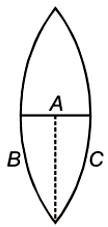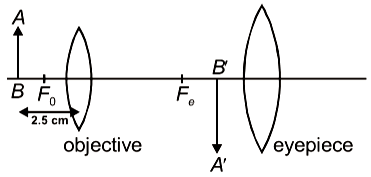The focal length of a convex lens is f. An object is placed at a distance x from the focal point and a real image is formed. The linear magnification has a magnitude
1.
2.
3.
4.
Which of the following is not due to the total internal reflection of light
1. Brilliance of the diamond
2. Mirage on hot summer days
3. Working of optical fiber
4. Difference between real and apparent depth of a pound
A ray of light incident on an equilateral prism at grazing incidence emerges from the prism at grazing emergence. The Refractive index of the prism is:
| 1. | \(1.5\) | 2. | \(1.8\) |
| 3. | \(1.33\) | 4. | \(2\) |
The refractive index of the material of the prism for violet colour is 1.69 and that for red is 1.65. If the refractive index for mean colour is 1.66, the dispersive power of the material of the prism
1. 0.66
2. 0.06
3. 0.65
4. 0.69
Absolute refractive indices of glass and water are 3/2 and 4/3. The ratio of velocity of light in glass and water will be
1. 4:3
2. 8:7
3. 8:9
4. 3:4
A thin equiconvex lens of power P is cut into three parts A, B, and C as shown in the figure. If are powers of the three parts respectively, then

1.
2.
3.
4.
Focal lengths of objective and eyepiece of a compound microscope are 2 cm and 6.25 cm respectively. An object AB is placed at a distance of 2.5 cm from the objective which forms the image B'A' as shown in the figure. Maximum magnifying power in this case is :


1. 10
2. 20
3. 5
4. 25
Two identical equiconvex thin lenses each of focal lengths \(20\) cm, made of material of refractive index \(1.5\) are placed coaxially in contact as shown. Now, the space between them is filled with a liquid with a refractive index of \(1.5\). The equivalent power of this arrangement will be:

| 1. | \(+5\) D | 2. | zero |
| 3. | \(+2.5\) D | 4. | \(+0.5\) D |
| 1. | \(10\) cm and \(80\) cm |
| 2. | \(85\) cm and \(5\) cm |
| 3. | \(70\) cm and \(20\) cm |
| 4. | \(5\) cm and \(85\) cm |
In the situation shown, the incident monochromatic ray retraces its path after its incidence on the silvered surface. The speed of light inside the prism will be

1.
2.
3.
4.






